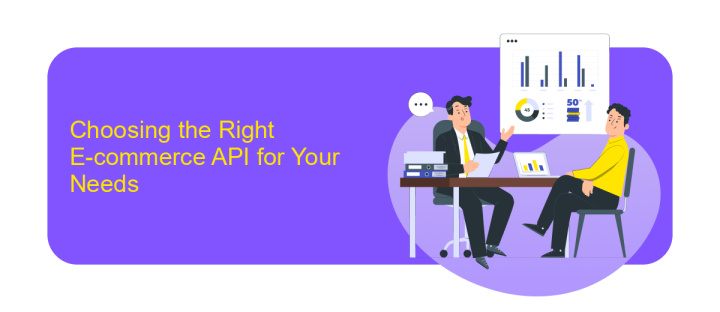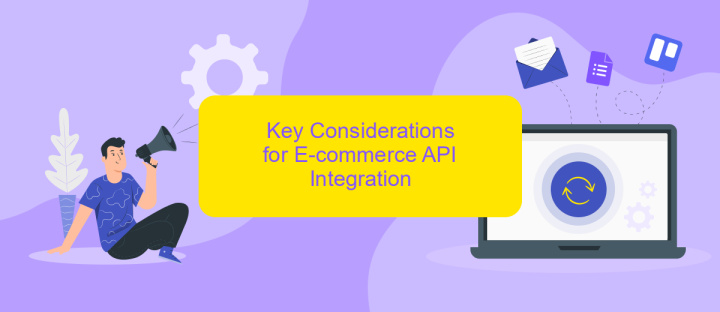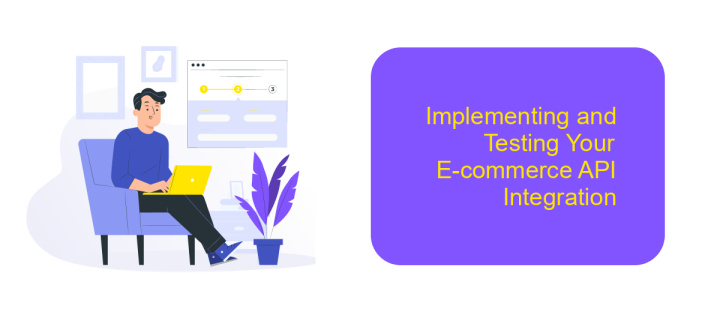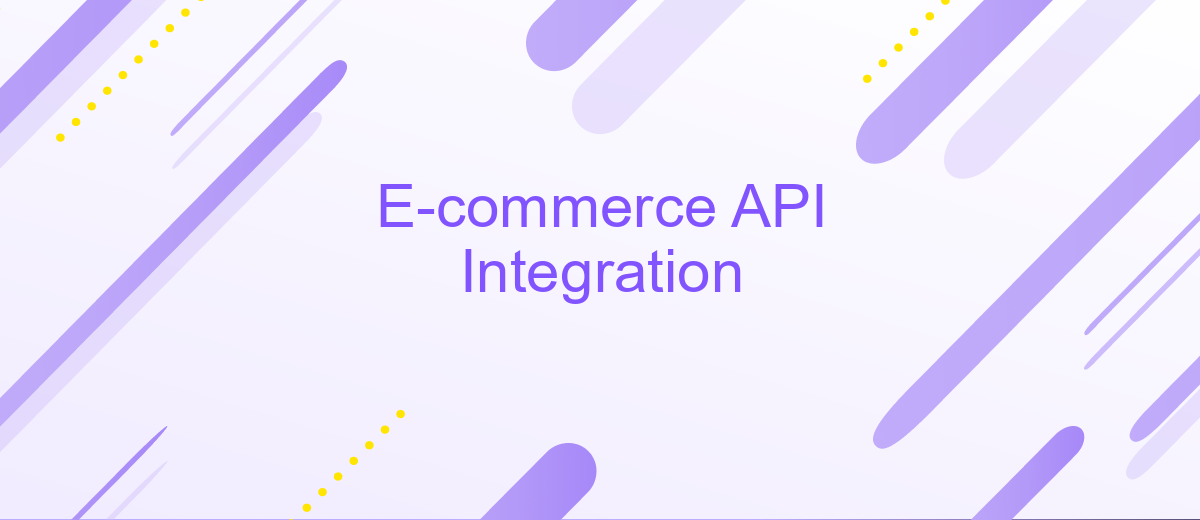E-commerce API Integration
In today's rapidly evolving digital landscape, e-commerce API integration has become a crucial component for businesses seeking to enhance their online presence and streamline operations. By connecting various platforms and services, APIs enable seamless data exchange, improving efficiency and customer experience. This article explores the significance of e-commerce API integration, its benefits, and how it empowers businesses to stay competitive in an increasingly interconnected world.
Understanding E-commerce APIs and Their Benefits
E-commerce APIs are essential tools that enable seamless integration between different software applications in the online retail space. These APIs allow developers to connect various systems, such as shopping carts, payment gateways, and inventory management platforms, to create a cohesive and efficient online shopping experience. By facilitating communication between disparate systems, e-commerce APIs help businesses automate processes, enhance customer interactions, and streamline operations.
- Improved efficiency through automation of repetitive tasks.
- Enhanced customer experience with personalized shopping features.
- Easy integration with third-party services and platforms.
- Scalability to accommodate growing business needs.
- Real-time data synchronization across multiple channels.
By leveraging e-commerce APIs, businesses can stay competitive in the fast-paced digital marketplace. These APIs not only reduce the complexity of managing multiple systems but also provide the flexibility to adapt to changing market demands. As a result, companies can focus on growth and innovation, while ensuring a smooth and engaging customer journey. Embracing e-commerce APIs is a strategic move that can lead to increased sales, customer satisfaction, and operational efficiency.
Choosing the Right E-commerce API for Your Needs

Choosing the right e-commerce API is crucial for optimizing your online business operations. Begin by evaluating your specific needs, such as the platforms you use, the features you require, and your budget constraints. Consider APIs that offer seamless integration with your existing systems, ensuring a smooth workflow. Pay attention to the documentation and support provided by the API vendor, as these are critical for successful implementation and troubleshooting. Scalability is another key factor; your chosen API should be able to grow with your business and handle increasing data loads without compromising performance.
Additionally, explore services like ApiX-Drive, which can simplify the integration process by connecting various platforms without requiring extensive technical knowledge. This service offers a user-friendly interface and a wide range of supported applications, making it easier to automate workflows and enhance productivity. By leveraging such tools, you can focus more on strategic growth rather than technical challenges. Ultimately, the right e-commerce API should align with your business goals, provide reliable performance, and offer flexibility to adapt to future needs.
Key Considerations for E-commerce API Integration

Integrating an API into an e-commerce platform can significantly enhance functionality and user experience. However, there are several key considerations to ensure a successful integration. First, understanding the specific needs of your business and how the API can address them is crucial. This involves evaluating the features offered by the API and aligning them with your business goals.
- Compatibility: Ensure the API is compatible with your existing systems and platforms.
- Security: Evaluate the security measures provided by the API to protect sensitive customer data.
- Scalability: Consider whether the API can handle increased loads as your business grows.
- Documentation: Check the availability and comprehensiveness of the API documentation for ease of integration.
- Support: Assess the level of technical support provided by the API provider for troubleshooting and assistance.
By carefully considering these factors, businesses can ensure a smoother integration process and leverage the full potential of the API to enhance their e-commerce operations. A well-integrated API can lead to improved efficiency, better customer experiences, and ultimately, increased revenue.
Implementing and Testing Your E-commerce API Integration

Implementing your e-commerce API integration begins with a thorough understanding of the API documentation. This documentation provides essential guidelines and specifications required for seamless integration. Start by setting up a development environment where you can safely test the integration without affecting the live system. Ensure you have the necessary API keys and authentication tokens to access the API services.
Once the environment is ready, proceed with coding the integration. Focus on key functionalities such as product listing, order management, and customer data synchronization. Utilize best practices in coding to ensure the integration is robust and maintainable. It's crucial to handle errors gracefully and implement logging to track any issues that may arise during operation.
- Ensure all API endpoints are correctly implemented.
- Test each function thoroughly to validate expected outcomes.
- Simulate various scenarios to check error handling capabilities.
- Review the integration for security vulnerabilities.
Testing is a critical phase in the integration process. Conduct both unit and integration tests to ensure every component works as intended. Use automated testing tools to expedite the testing process and identify any potential issues early. Once satisfied with the tests, deploy the integration to the live environment and continuously monitor its performance.


Maintaining and Optimizing Your E-commerce API Integration
Maintaining and optimizing your e-commerce API integration is crucial for ensuring seamless operations and enhancing customer experience. Regularly monitor API performance metrics such as response time, error rates, and data accuracy to identify potential issues early. Implement automated testing and alert systems to promptly address any disruptions. Keeping your API documentation up to date is essential for efficient troubleshooting and future integrations. Additionally, consider using tools like ApiX-Drive, which can simplify the integration process and provide valuable insights into API performance.
Optimization involves not only fixing current issues but also enhancing the integration for future growth. Evaluate your API’s scalability to handle increased traffic and transaction volumes. Implement caching strategies to reduce server load and improve response times. Regularly update your API to leverage new features and security enhancements. ApiX-Drive can be instrumental in optimizing your API integration by offering automated workflows and data synchronization, ensuring that your e-commerce platform remains agile and competitive in a rapidly evolving market.
FAQ
What is an E-commerce API Integration?
How can I integrate an API with my e-commerce platform?
What are the benefits of using API integrations in e-commerce?
What challenges might I face with e-commerce API integrations?
How do I ensure the security of my data when using e-commerce API integrations?
Routine tasks take a lot of time from employees? Do they burn out, do not have enough working day for the main duties and important things? Do you understand that the only way out of this situation in modern realities is automation? Try Apix-Drive for free and make sure that the online connector in 5 minutes of setting up integration will remove a significant part of the routine from your life and free up time for you and your employees.

